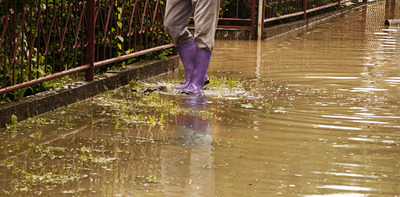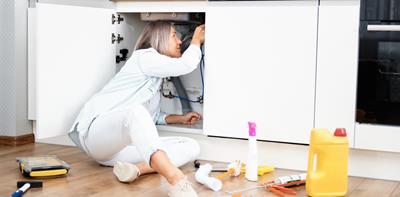
Flooding can happen very quickly and have an incredibly devastating impact.
Climate change is making the problem worse and in England alone, the Environment Agency estimates that 5.2 million properties are at risk of flooding[1].
But 30% of the households that are most at risk are unprepared, according to the agency[2].
So, now is the time find out the extent of the flood risk in your area, and then take action to protect your family and home.
Find out if your property is at risk
The first thing to do is to check to see if your area is prone to flooding. Depending on where you live, you can use the following websites to check your flood risk:
Also, if you live in an area at risk of flooding you could get free flood warnings direct to your mobile, home phone or email:
In Northern Ireland, flood warnings are available from the Met Office.
Worried about flooding?
Find out more about our Build Back Better scheme and how to combat the risks of flooding.
Take steps to limit damage to your property
If you are expecting flooding in your area then, there are a number of steps you can take to limit the damage to your property:
- Move your most valuable possessions, as well as sentimental items, upstairs or out of your home if possible
- Check your home insurance to make sure you are covered for flood damage
- Move your car to higher ground
- Keep your insurance policy documents and contact details for your local council, utility providers and your insurance company somewhere safe, in waterproof bags
- Prepare a bag of emergency supplies in case you have to evacuate your property, with items like:
- Bottled water and food
- Blankets
- A torch and spare batteries
- Essential medicines
- Supplies for looking after your baby or pet (including toys)
- Rubber gloves and wellington boots
- Unless you have time to remove them, drape curtains over their poles
- Use thick plastic sheeting to cover up any air vents, as these are a common entry route for flood water
- If you leave your home during flooding, turn off your mains water, gas and electricity - if it’s safe to do so
- Keep yourself, your family and any pets safe
- Consider how you could help vulnerable friends or neighbours
Make your home more resilient to flooding
While you can’t completely flood-proof your home, you can take steps to reduce flood damage and make your property more resilient to flooding. These include:
- Lay tiles instead of carpets or wooden floors
- Landscape around your home in order to divert water away from the building
- Move electrical sockets up the wall and fit non-return valves
- Buy large sealable bags to protect large valuables such as electrical goods and sofas that may be too hard to move to a higher floor
- Consider installing a flood gate at your door
- Fix flood boards to your doors and windows
- Buy covers that fit over air bricks to stop flood water from entering, or consider having self closing air bricks installed if you're building an extension
This is just a start and there is a wide range of products available to help you protect your property from flood damage. A directory of these is available from the National Flood Forum at www.bluepages.org.uk.
For more information about how to protect your home and belongings, go to Solved.
[1] https://inews.co.uk/news/uk-weather-forecast-floods-met-office-wet-winter-warning-britain-1313890
[2] https://inews.co.uk/news/uk-weather-forecast-floods-met-office-wet-winter-warning-britain-1313890


